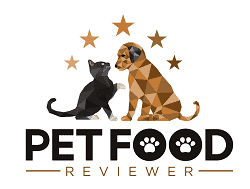What Is Copper Proteinate?
Copper Proteinate is a trace mineral that is made up of Copper and a protein. While rare, some also call Copper Proteinate, Copper Amino Acid Chelate.
Copper Proteinate’s most common use is as an additive to animal feed, such as Corn or Barley, for livestock animals. This includes many of the common livestock animals like Cows or Pigs.
However, vigilant pet owners may have also noticed that Copper Proteinate is present in some pet food recipes as a minor ingredient.
But given the very limited information available online about Copper Proteinate, why is it in pet food recipes, and is it an appropriate addition?
Why Is Copper Proteinate In Pet Food?
The primary reason that Copper Proteinate is present in pet food recipes is as a source of the mineral Copper. For pet food recipes to be considered “Complete and Balanced,” they must contain minimum levels of several vitamins and minerals, including Copper.
While the vast majority of pet food recipes will naturally contain some Copper, some of them may have naturally low levels and so need to supplement the food to meet or surpass these requirements.
As to why Copper Proteinate is chosen over other sources of Copper is because it is considered by many to be of a higher quality source of Copper for pets than Copper Sulfate.
Copper Sulfate is seen far more commonly in pet food recipes and is almost certainly the most popular mineral added to pet food to boost Copper levels.
The reason that Copper Proteinate is considered to be higher-quality than Copper Sulfate is that it is a chelated mineral that allows it to be more easily absorbed by a pet’s digestive system.
Without going into too much detail, the fact that this Copper is already bound to a protein means it doesn’t bind to other compounds, thus allowing it to be more consistently absorbed.
However, this comes at a cost because chelated minerals, such as Copper Proteinate, are usually more expensive than their cheaper non-chelated alternatives.
While you may think that the cost of a tiny portion of minerals, such as Copper Proteinate, maybe insignificant, pet food manufacturers are always looking for ways to reduce cost, especially given the scale of their production.
Moreover, some pet food brands even choose to mix chelated minerals and non-chelated minerals, which could see the inclusion of both Copper Sulfate and Copper Proteinate in the same pet food recipe.
While this isn’t consistent throughout the industry, some pet food brands defend this and claim that it is an improvement over the inclusion of just a single Copper compound.
Pet Food Brands That Use Copper Proteinate
Copper Proteinate is widely used throughout the pet food industry as a minor ingredient and is used by many of the popular brands in the United States.
Some well-known examples of pet food brands that use Copper Proteinate that you may have heard of include American Journey, Taste of the Wild, Diamond, Blue Buffalo, Royal Canin, Wellness, Orijen, and Natural Balance.
Below is an example of the ingredient list of Orijen’s Six Fish dry dog food recipe that includes Copper Proteinate.
As you can see, the portion of Copper Proteinate in this recipe is extremely small, which aligns with what we discussed above around it being used as an added mineral.
However, as we mentioned earlier, many pet food brands use a mix of Copper Proteinate and Copper Sulfate in their recipes. You can see an example of this below in the ingredient list of Taste of the Wild’s High Prairie dry dog food recipe.
As you can see here, Copper Proteinate is the most abundant copper compound, and there is then a slightly smaller quantity of Copper Sulfate.
Regardless, most pet owners do not need to be overly concerned about the presence of Copper Proteinate in their pet’s food.
While there could be minor pros or cons around their use, there is usually far bigger issues to address first, like the inclusion of unsavory meat ingredients or the excessive use of plant-based foods.



